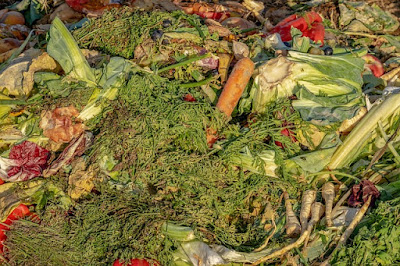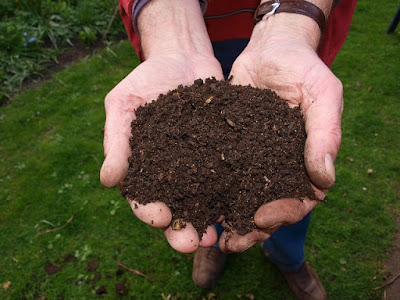Composting 101
A Little Art and a Little Science
Composting, in a nutshell, is turning your waste into nutrient-rich soil for use in your garden.
You can read about the subject in such depth as to make your head swim and find it to be quite overwhelming. But whether you start with a compost bin or a designated 3 foot by 3-foot area, knowing a few basic principles will help you achieve that rich, earthy-smelling soil amendment that we all want.
Mixing Those Greens and Browns
A 50/50 mix of the two through the pile will create a reaction that breaks the organic matter down into usable compost.
Here are some examples of what you CAN add.
Green list: (Nitrogen)
Not always green in color, but the “greens” consist of mostly wet or recently-growing materials that will supply most of the nutrients that make your compost good for your garden.
- Hedges and grass clippings
- Coffee grounds and filters
- Lettuce and other leafy vegetables
- Eggshells
- Weeds that have not gone to seed
- Vegetable shavings
- Fruit peals (in small amounts)
- Corn stalks
- Pulp from juicing
- Seaweed
- Tea Bags
Brown list: (Carbon)
Brown materials add bulk to the mix and allow air to get into the compost heap. These bins of decaying browns will leave make excellent leaf mold.
For a detailed article on making leaf mold for use as a soil additive and its benefits for your garden, click here.
- Dry leaves
- Paper products; shredded cardboard and newspaper (no color)
- Nut and nutshells
- Pine cones and pine needles
- Wood, bark, shavings, sawdust, wood ashes
Just as important is the DO NOT COMPOST list
- Weeds that have gone to seed
- Colored paper
- Meat, bones, and fish (They will attract animals and cause a foul odor.)
- Pet feces
- Anything containing a pesticide
- Dairy products
- Bread
- Oils and greases
- Onions and garlic
- Cheese
- Tissues or paper towels
- Leftovers that aren't vegan
 |
| Click to View |
Place some browns on top of any greens you add to the pile. A good mixture of wet greens and dry browns through the pile is a great recipe for success.
The decomposition of materials in a compost pile is accomplished by microorganisms, especially bacteria and molds. These organisms need water and air for the greatest microbial activity.
Watering
Water your pile thoroughly to the consistency of a damp sponge whenever it dries out.
Aeration
Aeration of the pile will keep active the microbial activity you're developing. Many gardeners use the three-bin system like above and transfer the decaying contents from one bin to the next every two weeks.
This is the fastest way to get that black gold we call compost. If you don't have the room for this setup, you can poke holes throughout the pile for airflow.
 |
| Click to View |
Other Tips for Speeding up the Process
- Cut food scraps up into smaller pieces.
- Crumble your egg shells or any ingredient that takes longer to decompose.
- Although adding twigs is okay, not adding them will speed up the process.
How to tell when the compost is ready to use.
- The material will have broken down into small bits that are unrecognizable of what they once were.
- It will look black or dark brown and crumbly.
- It will have an earthy smell.
It's worth noting that at this stage the material is still decomposing which is what you want. Once you add this to your garden, microbes and other soil life will continue the decomposition.
While this is happening, the soil structure is improving and nutrients are being slowly released. This is important as the larger molecules at this stage contain a lot of nitrogen, phosphorus and other valuable minerals.
How should it smell?
During the composting process, the matter is decaying and it is normal to smell things like grass or leaves as they decay. In a well-managed compost pile, there should never be a foul odor.
If there is a foul smell, the likely culprit is usually not sticking to the “Not to Compost” rule, especially adding pet waste, dairy products or fats and greases.
 |
| Click to View |
Remedies for the foul odor
- Add more brown material to the pile.
- Bury food deeper into the pile and top with some browns.
- Turn the pile more frequently.
~~~~~~~~~~
Composting is a great way to add nutrients and organic material to your garden while keeping those ingredients out of the landfill. So start making your own compost today, and start saving that money to buy more plants!!
~~~~~~~~~~
~~~~~~~~~~








Comments
Post a Comment